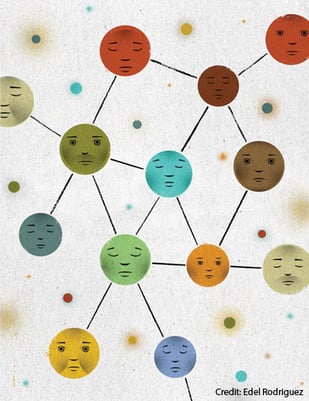Workplace diversity: How many flags can your company fly?
Posted on April 05, 2021 by Laurent Cros
We all intuitively know it: a group composed of diverse backgrounds and experiences is more likely to produce better ideas and results than a homogeneous one, where everybody looks alike and has the same culture.
In fact, many studies have been conducted that prove that diverse teams are substantially more successful than other less inclusive groups.

What are some of the ways that diversity and inclusion drive results? “Diversity jolts us into cognitive action in ways that homogeneity simply does not,” wrote Columbia Business School Professor, Katherine Phillips, describing her research and that of others for Scientific American in “How Diversity Makes Us Smarter.”
Members of a homogeneous group rest somewhat assured that they will agree with one another; that they will understand one another's perspectives and beliefs; that they will be able to easily come to a consensus. But when members of a group notice that they are socially different from one another, they change their expectations. They anticipate differences of opinion and perspective. They assume they will need to work harder to come to a consensus. This logic helps to explain both the upside and the downside of social diversity: people work harder in diverse environments both cognitively and socially. They might not like it, but the hard work can lead to better outcomes.
Harvard Business Review reported that diverse companies enjoyed better overall financial performance. EBIT margins for companies with diverse management teams were nearly 10% higher than for companies with below-average management diversity. Diverse teams are more capable of addressing market segments with demographics similar to some of the team members. A 2013 Harvard Business Review affirms that when at least one team member shares a client’s ethnicity, the team is more than twice as likely to understand that client’s needs than teams where no member shares that trait.
Here are five major advantages to fostering a diverse workplace:
- Expanded creativity and problem-solving
A diverse workforce brings a wide variety of people with different experiences, skills, perspectives and insights together to solve problems. Diversity increases innovation, creativity, and strategic thinking because teams of people who come from different backgrounds can draw upon their unique experiences and wider range of knowledge to spark new, innovative ideas. In fact, a study shows that cognitive diversity can enhance team innovation by up to 20%.
(Source: Deloitte, The diversity and inclusion revolution: Eight powerful truths - Better decision-making
Diverse groups of employees pull from a wider range of sources and experiences. That can help them make sounder decisions, leading to improved results for the business. Diverse teams make better decisions than non-diverse teams up to 87% of the time, according to one study. Scientists believe that inclusive teams often outperform homogenous ones when it comes to decision making because they process facts more carefully. - Increased profitability and productivity
Ambitious professionals are often more attracted to inclusive companies. This can result in a more motivated, efficient workforce and increased productivity and profitability. One study shows that companies in the top quartile for gender diversity on their executive teams are 15% more likely to generate above-average profitability compared to companies in the bottom quartile whose executive teams are predominantly white males. - Enhanced employee engagement and retention
Employees often feel more comfortable and happier in inclusive environments. They also tend to be more loyal and apt to stay longer at companies where their unique contributions are recognized and respected. 76% of job seekers consider workplace diversity an important factor when considering employment opportunities.
(Source: Glassdoor Diversity Hiring Survey) - Better company reputation
When businesses promote diversity, they are perceived as more relatable, socially responsible and human by a greater number of people. This can improve your overall brand reputation, leading to new customers, partnerships and markets. Not only that, but 61% of employees believe diversity and inclusion strategies are beneficial and essential.
(Source: Diversity + Inclusion: What It Is, Why It Matters, and How to Make It a Priority)

Boston Centerless does something I have never seen anywhere else, even in large multi-national corporations: on the production floor, facing all the work centers, it flies a full-size flag for each different country and territory of origin represented in its employee population (55% of which was born outside the US). Including the United States flag, that is a remarkable total of 14 nations of origin represented. I challenge you to name them all!

One of those flags was added for me when I joined. I was born and raised in France before moving to the United States in 2000 and becoming a proud American citizen in 2014. The gesture was definitely a strong welcome and made me feel recognized and included.
Beyond all the advantages that diversity brings to an organization, consider this other one: the company organizes an annual International Food Day where employees are encouraged to bring one of their favorite dishes to share. As you can imagine, with such a variety of backgrounds, it is much more than burgers and chips! (Last year’s event was missed due to the pandemic). I for one cannot wait for this tradition to return and to participate in it!
So, with all that said, ask yourself how many flags your company can fly…
For those still looking for the countries represented by the flags, they are, from left to right: Bosnia and Herzegovina, India, France, Thailand, Nigeria, Cambodia, United States, Dominican Republic, Portugal, Italy, Barbados, China, Vietnam and Puerto Rico.
